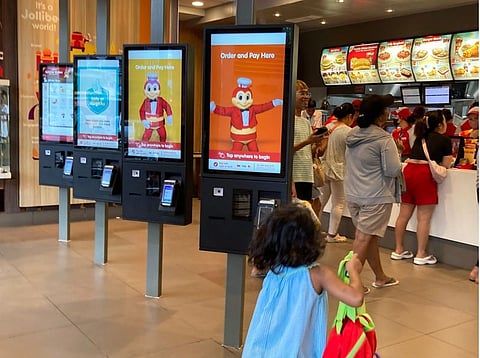Jollibee eyes 800 new stores worldwide by end-2025: Where it's expanding
Fastfood giant’s expansion, with nearly 10,000 stores, means it's gaining global appeal

Manila: In the sizzling showdown of Philippine fast food, the latest US-Philippines tariff drama adds an unexpected twist to the Jollibee vs. McDonald’s rivalry.
With the US slapping a hefty 19% tariff on Philippine goods, while the Philippines promises to keep imports from the US tariff-free, the battle for taste buds just got spicier.
Jollibee has earmarked up to $367 million (Php21 billion) in capital expenditures to support this growth, The Charlton Media Group reported.
Its global store network grew significantly, reaching nearly 10,000 stores as of early 2025, with over 6,300 located overseas across regions including North America, Southeast Asia, Europe, the Middle East, Asia, Australia, and China.
McDonalds on top, Jollibee at No. 17
Research from consultancy Brand Finance shows that Jollibee ranks 17th globally in its Restaurants 25 report – for the 10th consecutive year.
McDonald’s leads with a brand value of $40.5 billion. Jollibee had a brand value of $2.5 billion (up 8%), an impressive mark by maintaining its presence in the global rankings for ten consecutive years since 2016.
Jollibee is the sole restaurant brand from the Philippines and also the Asean region to be featured in the latest Restaurants 25 2025 report by Brand Finance.
Jollibee dominates the local quick-service restaurant market, with a 30.7% market share; McDonald’s holds about 10.3%.
Will the tariff-free passport in the Philippines make Big Macs and fries a little sweeter for Filipino consumers? It remains to be seen.
And when it comes to making food more accessible, it’s not all fast-food doom and gloom.
Food powerhouse
Jollibee stands out as the powerhouse, fuelling much of the quick service restaurant sector’s growth, as it continues to dominate the Philippine food service market, driven by rapid franchise expansion and innovative menu offerings that keep consumers coming back.
Locally, Jollibee leads the pack, with over 3,300 stores in the Philippines and thousands more abroad, making it the largest fast-food chain in the country and a beloved household name.
In Q1 2025 alone, Jollibee’s systemwide sales surged by 18.9%, with the brand’s same-store sales growing 8.6% locally, reaffirming its strong market position.
Jollibee’s expansion plans not only deepens its local footprint but also accelerates its international growth in key Southeast Asian markets like Vietnam, Singapore, and Malaysia, where it posted nearly 28% sales growth in early 2025.
Other notable QSR brands including McDonald’s, Chowking, Greenwich, and KFC also contribute to the sector’s strength, according to a report by Global Information.
But it is Jollibee’s combination of Filipino-flavoured menus, strategic store openings, and strong brand loyalty that propels it forward as the clear sector leader.
The company’s success has helped fast food remain one of the fastest growing segments over the past decade, with popular items such as burgers, spaghetti, and pizza retailing at an average price of around $5.60 per 300 grams.
The Philippines’ foodservice market remains robust and vibrant, with quick service restaurants leading the charge.
Their reach, product innovation, and strong brand loyalty set the tone for the industry’s dynamic growth ahead, supported by rising consumer demand and digital transformation in food delivery services.
Jollibee’s expansion — planning 800 new stores worldwide by 2025 — means it’s cooking up strategies beyond tariffs, blending local flavours with international appeal.
Meanwhile, McDonald’s, the global fast-food giant, leans on its AAA+ brand strength and sprawling network to maintain its grip.
Locally, Filipino fans continue to feast on their favourites.
The tariff skew may reshape supply costs, but it also fuels an epic rivalry, where each burger win tastes just a bit more triumphant in this trade-tinted flavour face-off.
Sign up for the Daily Briefing
Get the latest news and updates straight to your inbox






